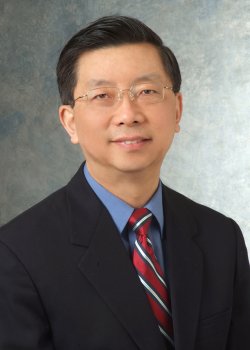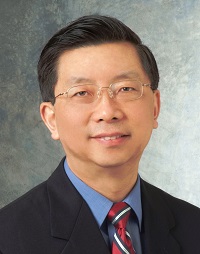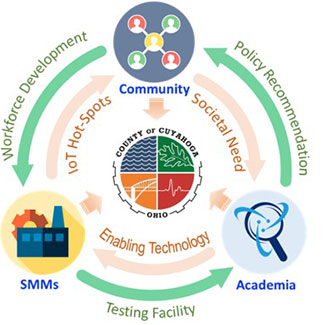
Revitalizing Northeast Ohio by boosting its manufacturing community

National Science Foundation grant funds Case Western Reserve University-led team seeking to modernize industry as key to helping surrounding neighborhoods
Case Western Reserve University engineers, computer scientists and social scientists are leading a project to help modernize small- and medium-sized manufacturers (SMMs) as a way to improve Northeast Ohio communities.
The team, which includes faculty from Cleveland State University and Lorain County Community College, is supported by a three-year, $1.5 million grant from the National Science Foundation (NSF). Robert Gao, chair of CWRU’s Department of Mechanical and Aerospace Engineering, is leading the initiative.

“There’s a negative association with the phrase ‘Rust Belt,’ but the truth is that we made—and continue to make—good things here in Northeast Ohio,” Gao said. “The problem is that there are a lot of new technologies which many SMMs can’t acquire as easily as [larger] companies. That’s where we come in—by providing one way for those companies to compete.”
That help will include developing and presenting concrete case studies to manufacturers about how to use some of the tools associated with the “Internet of Things” (IoT), including artificial intelligence (AI) and cutting-edge sensors, to radically update their machinery. The group also hopes to forge a strong partnership between academic researchers and industry to enhance regional workforce development and talent retention.
The IoT refers to the billions of physical devices around the world that can collect and share data over the internet, including factory automation, health care devices that remotely monitor patients and systems that track transportation and utilities infrastructure.
Also involved in the project from Case Western Reserve are Kenneth Loparo, the Arthur L. Parker Professor of electrical, computer and systems engineering; Kalle Lyytinen, Distinguished University Professor and chair of design and innovation at Weatherhead School of Management; Susan Helper, the Frank Tracy Carlton Professor of Economics at Weatherhead School of Management; and Pan Li, associate professor of electrical, computer and systems engineering.
Collaborators also include business and development organization TeamNEO; manufacturing advocate MAGNET; industrial manager Dan T. Moore Co.; and Lincoln Electric, a Northeast Ohio electric motor company founded in 1895 and now an international company.
Competing in a global economy

The group’s NSF proposal asserted that the success of smaller manufacturers is critical to a community’s wealth generation and wellbeing.
“We have found that in Cuyahoga County and across Northeast Ohio, SMMs mingle with the residents and, in fact, are the residents,” Gao said. “So, in a very real way, if we can help these manufacturers improve, become more efficient and successful, it will directly help their home community.”
However, Gao said, although many SMMS may be interested in using advanced technologies, they suffer a “technological stagnation” by being too cautious to adopt them or lack money, specific knowledge or even awareness.
So, the team will focus on three main goals:
- Transforming SMMs in Cuyahoga County into “smart” enterprises which show increased productivity and are more responsive to new supply chain dynamics.
- Rejuvenating SMMs by adding sensing, artificial intelligence and Internet of Things technologies.
- Enhancing workforce development and talent retention in Cuyahoga County and Northeast Ohio by increasing collaboration among academic researchers, local community colleges, high schools, SMMs, economic development partners and community stakeholders and multinational manufacturers.
Additionally, Gao said the interdisciplinary project could serve to advance the manufacturing program in mechanical and aerospace engineering; enhance collaboration both within the Case School of Engineering, including the Institute of Smart, Secure, and Connected Systems (ISSACS) and the university at large; and increase the visibility of CWRU as a leader in advanced manufacturing.
For more information, contact Mike Scott at mike.scott@case.edu.
This article was originally published Oct. 18, 2021.
